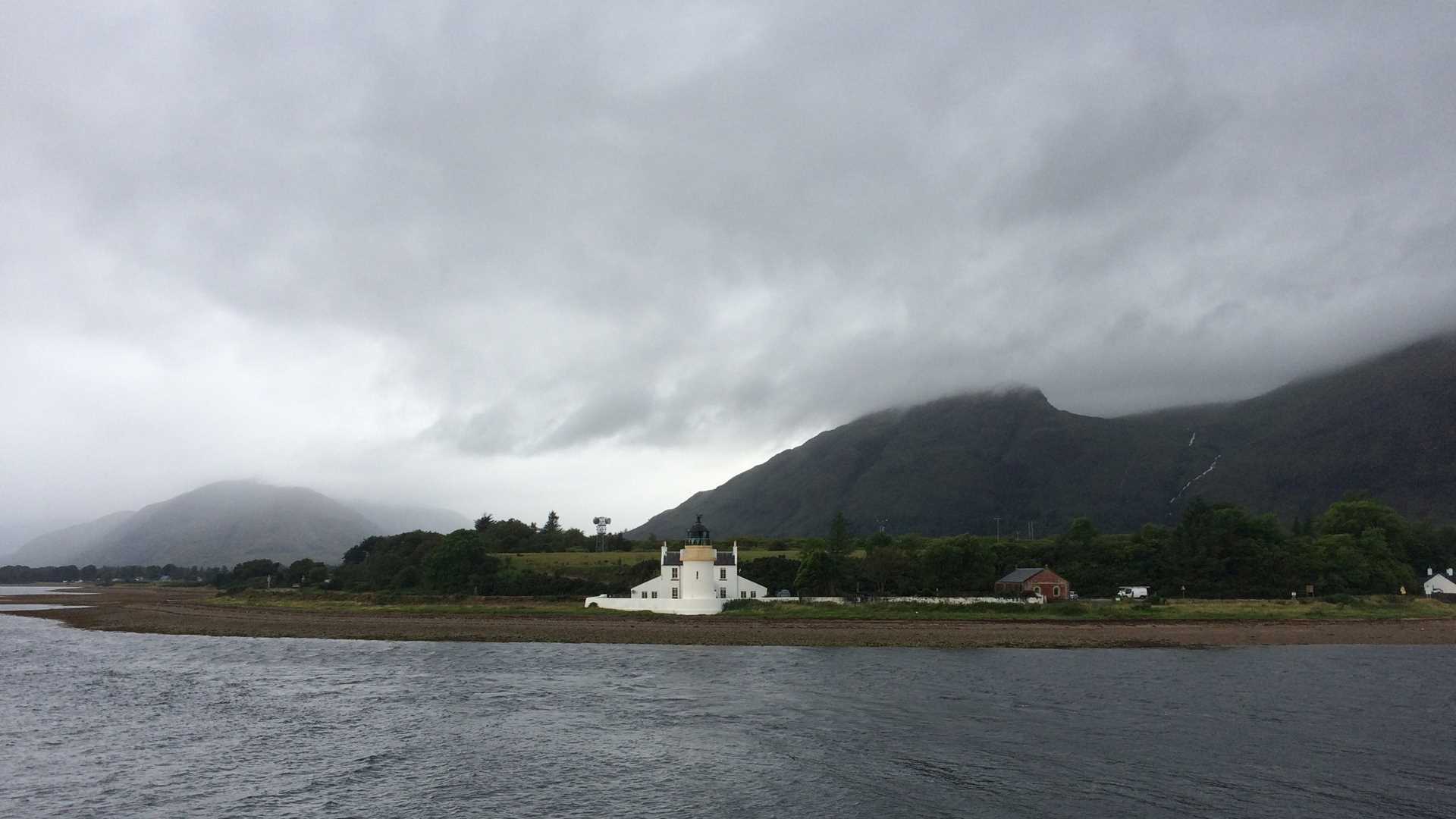Flotillas of mallards observed us as we left Corpach Basin and entered the sea lock, bidding farewell to the Caledonian Canal which has been our home since the start of our voyage. Now we were at sea, or at least in an arm of the sea known as Loch Linnhe (In Scotland a loch can be either a freshwater lake or a saltwater fjord). As we sailed out, Konia, our cultural specialist, gave a talk on the lighthouses of Scotland. Several generations of one family of engineers – the Stevenson’s – were responsible for the construction of these life-saving beacons around the coastline over a period of 150 years. Their most famous son, Robert Louis Stevenson, was something of a disappointment to the family as he did not follow in their engineering footsteps. Soon we were passing Corran Lighthouse, which was completed by the Stevenson’s in 1860.
Undaunted by the showers of rain and with a sprinkling of rainbows we sailed on, past the Isle of Lismore with its historic lime kilns and Iron Age broch. Finally we pulled in to Oban Bay, heading towards our overnight berth. This wonderful sheltered natural harbor is protected by Isle of Kerrera and guarded by Dunollie Castle, an ancient stronghold that has been the seat of Clan MacDougall since the 13th century. In 1263 King Haakon IV of Norway mustered a great fleet in this bay in an ultimately unsuccessful bid to defend the islands of the Hebrides, which had been Norse territory for more than 400 years, from the ambitions of the kings of Scotland.
Although people have lived in this area since the time of the Mesolithic hunters and gatherers 8,000 years ago, it wasn’t until the early 19th century that Oban developed as a town, port and transport hub. But, at the heart of this delightful town is a whisky distillery that was founded in 1784! It was here that we hastened for a guided tour of the production site of the celebrated Oban whisky.
We were shown how the barley was soaked and malted and distilled in pot stills and aged in oak barrels for years on end, and finally tasted the golden liquid itself.
Outside again, the sea front was a colourful scene with its bobbing fishing boats, yachts and ferries. On the skyline of Oban is McCaig’s Tower, a striking if unlikely monument built in 1897 that was inspired by the Colosseum. A walk uphill to it through the narrow winding streets brought us wonderful views over the town, Oban Bay and the beckoning Hebridean Islands beyond.







